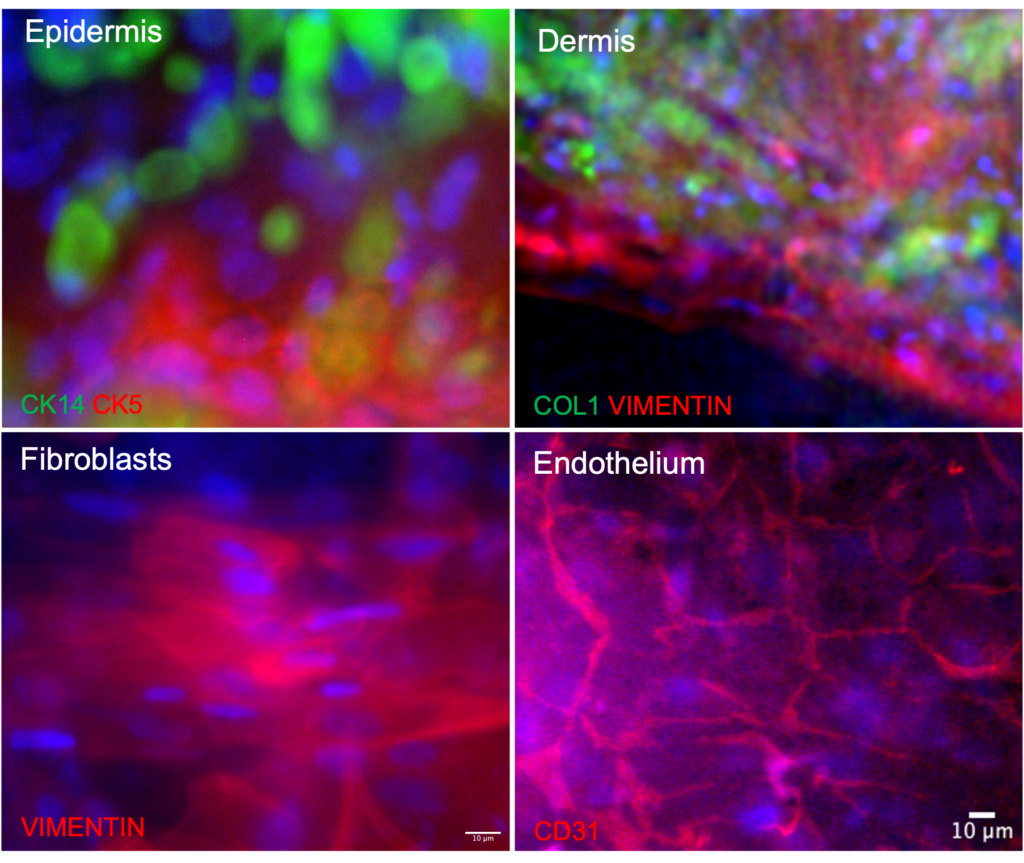
The First Skin Model to Faithfully Reproduce All Layers
The skin is the largest organ in the human body and plays a crucial role in protecting our bodies from the environment. We recognize the importance of the skin and its complex structure in drug discovery and development. We have developed a unique model that reproduces all core layers of the skin in a structure similar to human tissues to create a comprehensive and accurate in vitro testing environment.
We created four disease models – wound healing, melanoma cancer, atopic dermatitis, and skin ageing. These models are critical for identifying potential drug candidates and testing their safety and efficacy.
Using our technology, we’ve developed a promising bioactive matrix for wound healing. This matrix promotes faster and more effective wound healing by providing a supportive and nurturing environment for skin and blood vessels cells to regenerate. This promising asset has already shown significant potential in pre-clinical testing, and we are excited to see its potential in clinical trials. This is just one example of the potential of our platform to discover innovative life-changing treatments and there will be many more en route!
A Novel Wound Regenerating Bioactive Matrix Validated on the First Full-Thickness in vitro Wound Model
Chronic wounds affect 1-2% of the global population, while the incidence of acute wounds is 11% per year. These wounds can have a significant impact on a patient’s quality of life. To address this, we have developed the first full-thickness wound model allowing us to simulate the complex and dynamic environment of a wound and providing a comprehensive development environment for potential therapies.
Using our end-to-end drug discovery platform, we have developed our first asset, a dermo-epidermal wound regenerating matrix. We further optimized our matrix by complexing it with a wound stimulating compound. This more effective bioactive product, which we call Matrix+, has been shown to promote even faster and more effective wound healing in vitro. Matrix+ works by providing a supportive and nurturing environment for skin cells to regenerate. It also promotes the growth of new blood vessels, which helps to deliver oxygen and nutrients to the wound, accelerating healing.
Matrix+ represents a major breakthrough in wound care. By promoting faster and more effective wound healing, this innovative product has the potential to improve the lives of millions of people around the world.
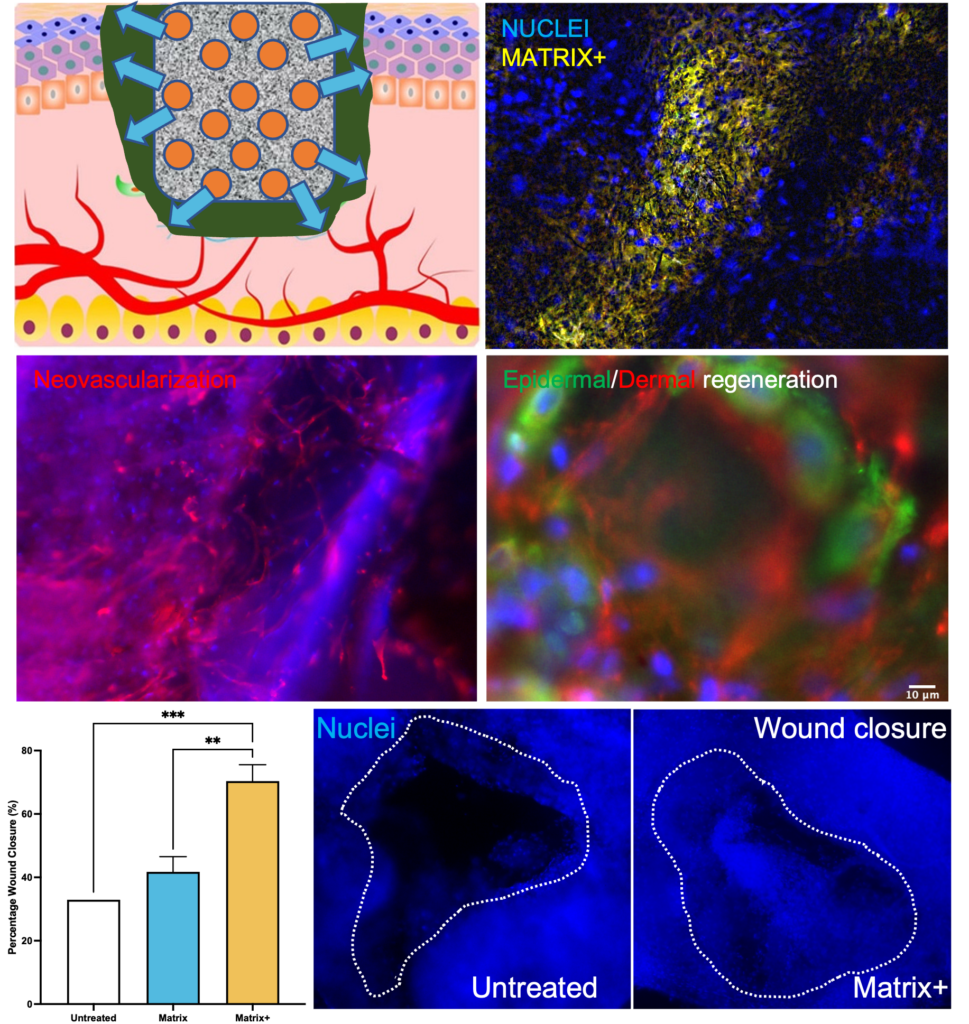
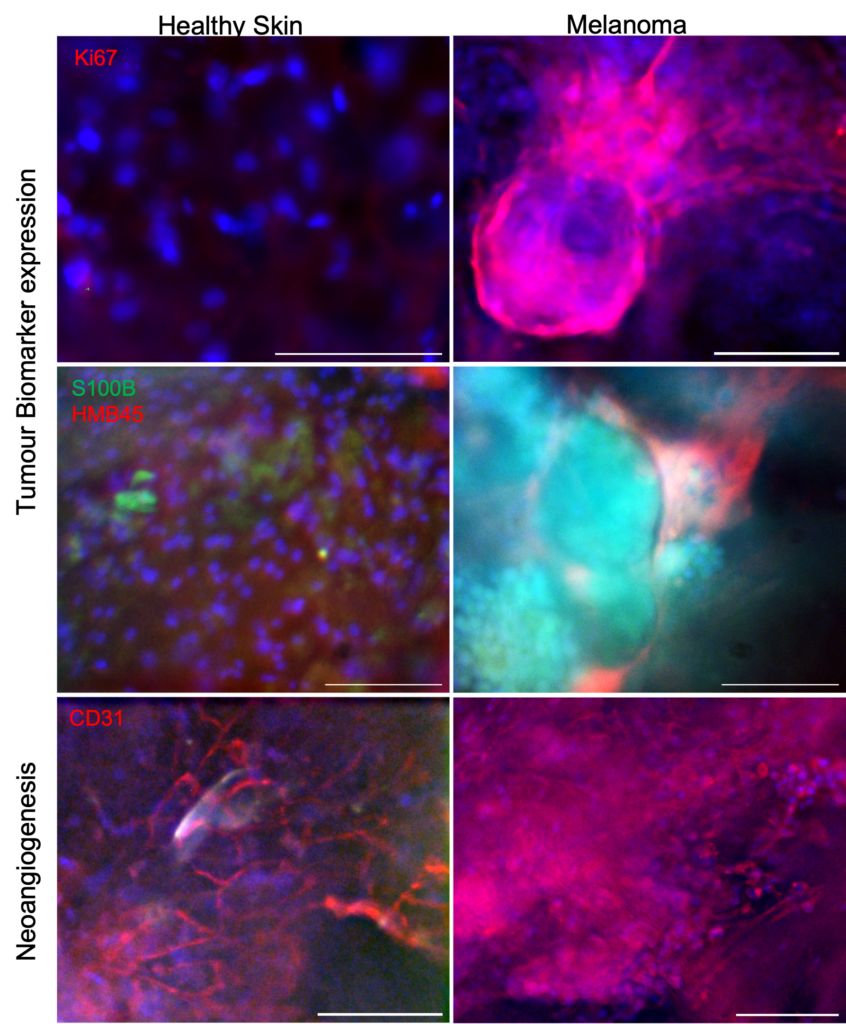
A Sophisticated Melanoma Model that Recreates the Geometrically-Complex Morphologies of Cancer
Melanoma is a particularly deadly form of skin cancer, accounting for only 1% of skin cancer cases, but causing a large majority of skin cancer deaths. We have developed an advanced melanoma model that allows us to simulate the complex and dynamic environment of melanoma, providing a comprehensive testing environment for potential therapeutic interventions.
Our melanoma model is unique in that it permits the simultaneous study of the tumor, vasculature, and neighboring cells for disease progression and therapeutic intervention. This approach allows us to identify potential drug candidates and test their safety and efficacy in a highly controlled setting, providing a more accurate and predictive development environment.
To validate our melanoma model, we used a clinically approved melanoma drug (PLX4032) and tested its efficacy and safety using our model. Our results show that the tumor response to treatment and biomarker (gene/protein) expression are in-keeping with clinical data, demonstrating the validity of our melanoma model. This is key in our efforts to discover and develop other potential therapeutics to address the growing prevalence of melanoma.
The Game-Changer for Skincare Innovation: A Human Relevant Model of Skin Ageing
The global anti-aging market was valued at $58.5 billion in 2020 and is expected to reach $87.5 billion by 2027. As the global population ages, the demand for effective anti-aging treatments is growing, making it a critical area of research and development.
Our more clinically relevant model of skin aging reproduces the senescence-associated secretory phenotype (SASP), a key driver of skin photoaging. This is critical for cosmetic and pharmaceutical skin anti-aging discovery. Our platform is enabling us to identify key pathways and biomarkers relevant to the development of novel anti-aging therapies.
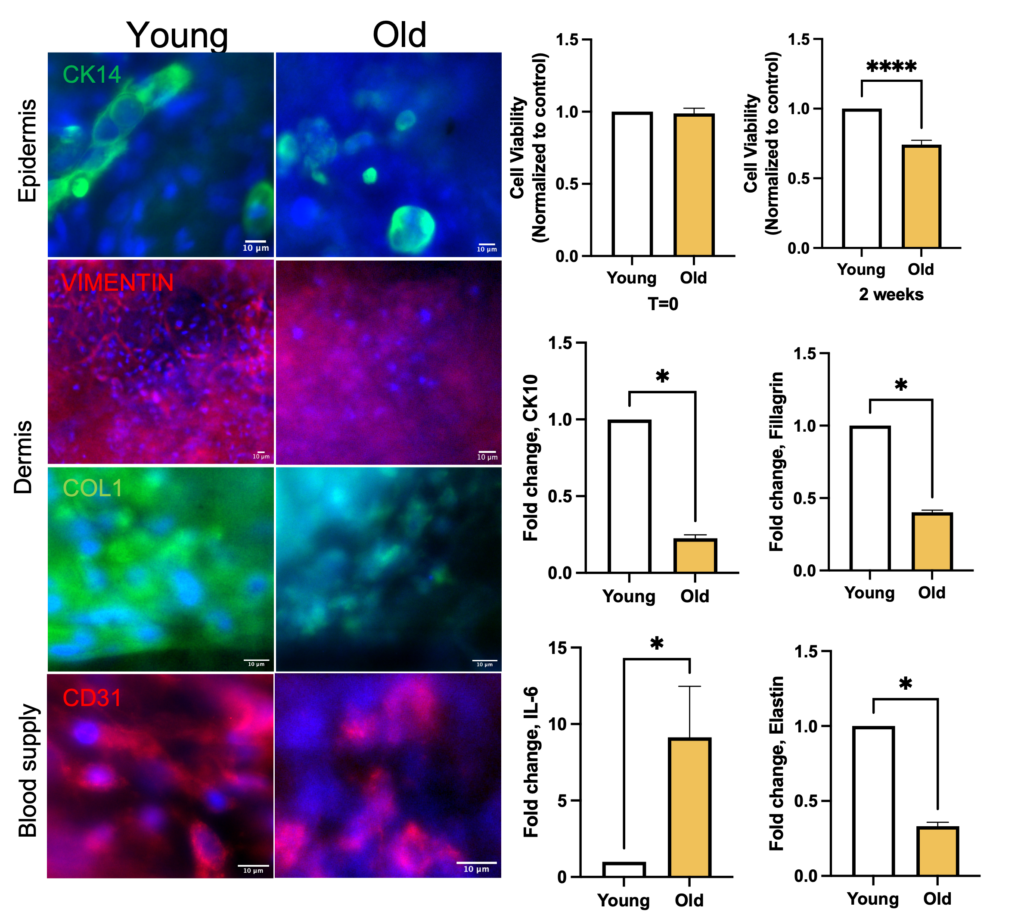
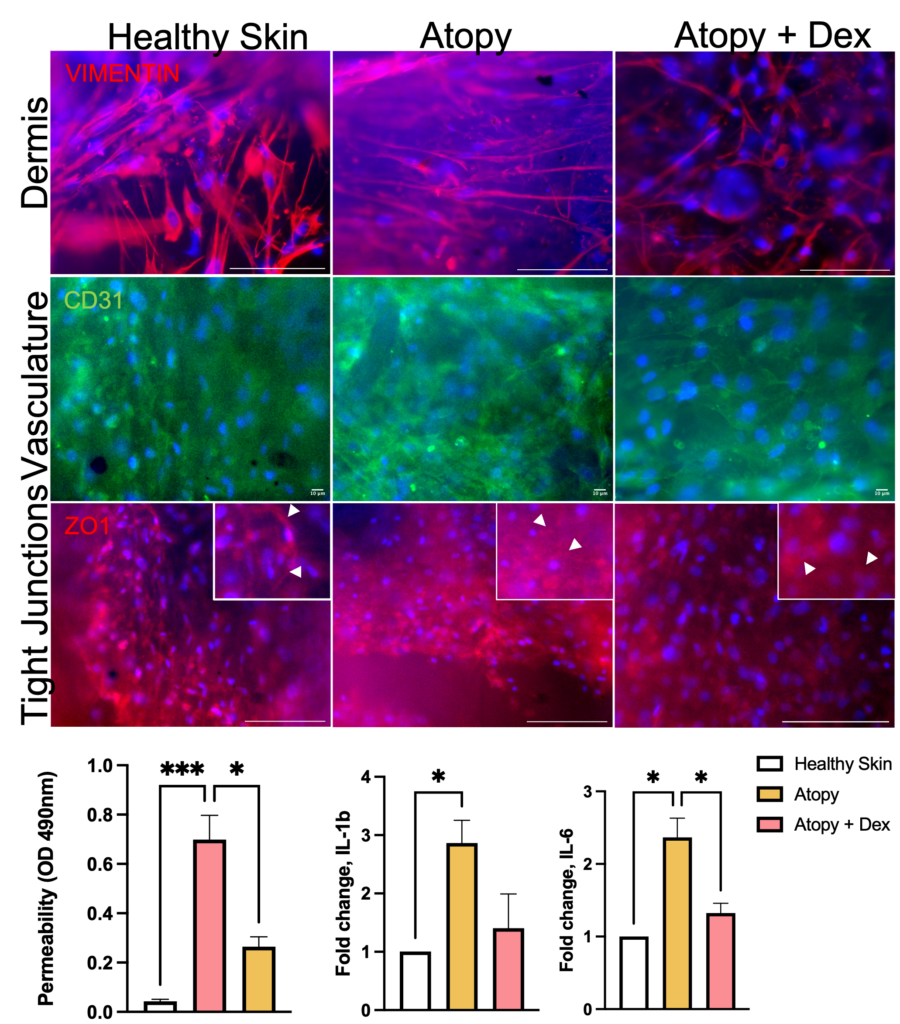
A More Complete Model of Atopic Dermatitis
Atopic dermatitis is a common and sometimes debilitating chronic inflammatory skin disease that affects 10-20% of children and 1-3% of adults. Its incidence is rising, making this complex disease a critical healthcare issue that requires innovative breakthrough solutions.
To better understand the complex nature of atopic dermatitis, we have developed a unique model that reproduces the inflammatory changes in atopic skin and the role of the vasculature. This model allows us to simulate the multi-cellular and dynamic environment of atopic dermatitis, providing a comprehensive development environment for potential therapeutic interventions.
This more complete model of atopic dermatitis provides a significant step forward in our understanding. It serves as a crucial component in our discovery workflow and will facilitate our development of effective treatments for this common and challenging disease.



